Nine Innings: The Yankees' Greatest Need, Unlikely All-Stars and Midsummer Classic Changes

THE YANKEES NEED TO FILL A HOLE IN THE TOP OF THEIR ROTATION
By Tom Verducci
For a team on pace to win 113 games, the New York Yankees have a glaring need. They need a starting pitcher with the talent to start one of the first three games of a playoff series. The need is there for two reasons:
• The Red Sox aren’t going away, so an arm for the regular season is needed to stay out of risking their entire season on a one-and-done Wild Card game.
• An arm also is needed to match up against Boston, Houston or Cleveland in a postseason series—all of who would have an edge in starting pitching.
The Yankees aren’t getting Jacob deGrom, Noah Syndergaard or Madison Bumgarner. If you’d like to convince Cole Hamels to accept a trade to New York, you’d better understand that hitters are slugging .695 off his fastballs—fourth worst in the majors. Michael Fulmer? He’s 2-11 with a 5.02 ERA in his past 20 starts. Chris Archer? He’s been an average pitcher over his past 80 starts (4.08 ERA, 100 ERA+). J.A. Happ? Marcus Stroman? Are they any better than Masahiro Tanaka or Sonny Gray?
So now you see how fixing their need becomes more problematic. And it’s unlikely a savior is coming from their minor league system. Justus Sheffield, 22, has promise, but he’s walking 4.5 per nine in Triple A.
Right now the Yankees are down two starters: Jordan Montgomery, who underwent Tommy John surgery, and Tanaka, who tweaked both hamstrings scoring from third on a flyball Friday.
(Please don’t use this rare kind of injury as another helicopter move for the universal DH. Even Tanaka said the injury is on him, not on the rule.)
More and more, it looks like for all the greatness of Luis Severino and what might be the greatest home-run hitting team of all time, the Yankees’ season will come down to Tanaka and Gray.
Yankees Place Masahiro Tanaka on DL With Hamstring Strains
Tanaka did pitch well last postseason, but he’s so dependent on one pitch, his splitter, that he’s always a risk of a blowup. About this time last year Tanaka pitched to an ERA over six. That’s when he finally figured out his fastball gets hammered and he better throw it less. Since then he has reduced his fastball usage from 38% to 27%, and been the better for it. (He has the third-worst slugging percentage against fastballs.)
Gray is 8-11 with a 4.26 ERA since the Yankees made him their go-to acquisition last year, proving the risk of plopping a pitcher into New York during a pennant race with expectations. But now the Yankees believe Gray might be turning a corner. Gray is a notorious tinkerer and over-thinker, always devising different pitch sequences to try to strike somebody out, a habit that often leads to falling behind hitters.
Three weeks ago the Yankees and pitching coach Larry Rothschild essentially told him to knock it off. They told him to follow the lead of catcher Austin Romine, who has become Gray’s personal catcher because Gray and Gary Sanchez could never get on the same page. Since then, Gray is 2-1 with a 1.93 ERA and bumped his strike percentage from 60% to 63%. It’s also led the notoriously slow worker to create quicker tempo both in his delivery and between pitches.
“He gets so fixated on the perfect sequence that it gets him in trouble sometimes,” manager Aaron Boone said. “He’s pounding the zone and getting ahead. Tempo follows that. He’s trusting the game plan and following Ro instead of over-thinking everything.”
There is an outstanding pitcher in there somewhere with Gray, who pitched to a 3.42 ERA in Oakland with a walk rate 28% lower than what it’s been as a Yankee. He might be in the answer. Over his next seven starts—leading up to the week before the trade deadline—the Yankees will know whether he is the answer or that answer has to come from outside the organization.
For now, the Yankees are the perfect example of how starting pitching has been devalued by the emphasis on home runs and on relief pitching. Their starters are 25-11, which puts them on pace to break the record of the 1953 Brooklyn Dodgers (64-31) for the fewest losses by a rotation in a full season. But they’ve done so by getting the most run support (5.6 per game) and with Boone getting them out as quickly as he can. Only nine times has Boone allowed a Yankee starter to throw 100 pitches, the fewest such games in the American League. Only the Giants, Dodgers and Brewers have fewer in the majors.
The formula works, but it is a risky one in the postseason.
HOW A SLIGHT ADJUSTMENT UNLOCKED THE POWER TO BRANDON NIMMO'S SWING
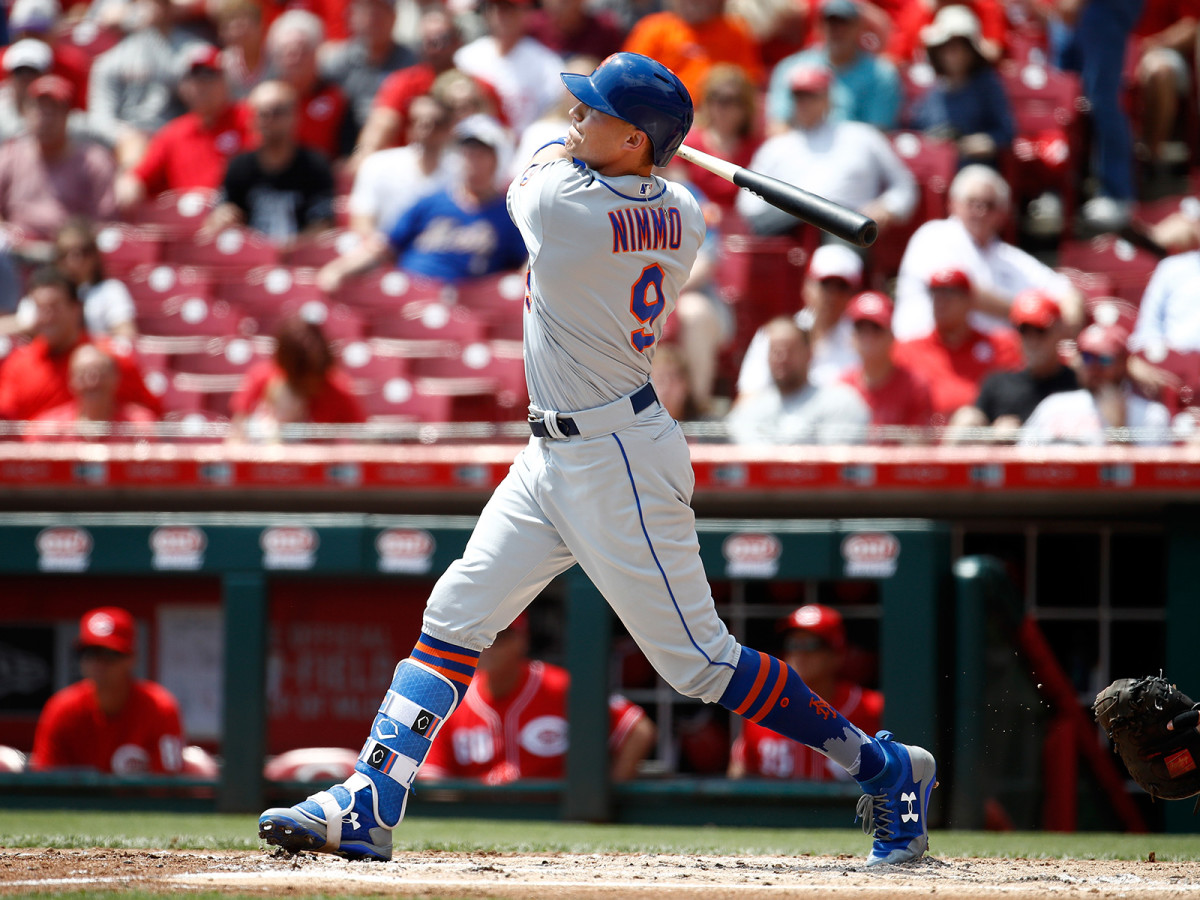
By Tom Verducci
The idea that Mets outfielder Brandon Nimmo could slug .560, as he was entering play Sunday, was preposterous when he broke in as a rookie in 2016. Nimmo appeared to be a fourth outfielder with little power, mostly because of the mechanics of his swing.
Nimmo, who played no high school baseball in Wyoming (one of three states without high school ball, though he did play plenty of summer baseball), unwittingly restricted his turn through the baseball. As Nimmo took a stride toward the ball, his front foot would land closer to the plate than his back foot and with his toes pointed at the plate—a position that locked his front hip and left his back side weakened.
Last August, hitting coaches Kevin Long (now with Washington) and Pat Roessler asked him if he ever hit before without a stride. Nimmo said no, but he was willing to try it. The coaches and Nimmo used Paul Goldschmidt of the Diamondbacks as their template: simply, the front heel comes off the ground and the foot goes down essentially in the same spot where it began. As Nimmo swung toward the ball, his front foot turned open—toes pointing toward shortstop rather than the plate. Now he generated better hip rotation and his back side drove through the baseball rather than staying behind it.
The result? Until August of last year, Nimmo had hit one ball more than 400 feet. Since then, he has hit six such bombs.
A career .346 slugger through August of last year, Nimmo slugged .479 in September and is slugging .560 this year.
Nimmo, 25, the first draft pick of Sandy Alderson as GM of the Mets, looks like an All-Star. He’s just short of qualifying for the batting title, but he should get there in about a week. In addition to his .560 slugging percentage, Nimmo also has posted a .411 on-base percentage. No qualified hitter in Mets history ever has finished a season at those thresholds.
Nimmo’s story is a good example of how labels can be proved wrong, especially with a willingness to change, hard work and the power of good coaching.
BEST THING I SAW THIS WEEK: THE WILDLY SLOPPY PLAY BETWEEN THE REDS AND ROCKIES
By Emma Baccellieri
The box score entry for this play, from the eighth inning of Wednesday’s Rockies-Reds game, is deceptively straightforward: Carlos González reached on a fielding error by Billy Hamilton and then advanced to second. But the play itself is much more than that, much stupider and so much better:
There are, obviously, quite a few pieces of this that fit the general definition of error, if not the technical baseball one. Just about everyone involved is committing an error of some sort. And yet the only action that was actually scored as such—Hamilton reaching for that easily catchable ball, only for it to glance off the tip of his glove—somehow felt the least error-like of all.
Sure, that portion of the play is a textbook example of an error. It was undeniably a misplay that prolonged the presence of a runner on the base, as the rulebook calls for. But compare it to everything else that ensued here. Hamilton was attempting a regular baseball move and came up short; it was a normal impulse, backed by sound judgment, where the execution just happened to fail. It’s so ordinary as to be almost boring. The rest of the play? So much messier. One step at a time:
Carlos González falls down
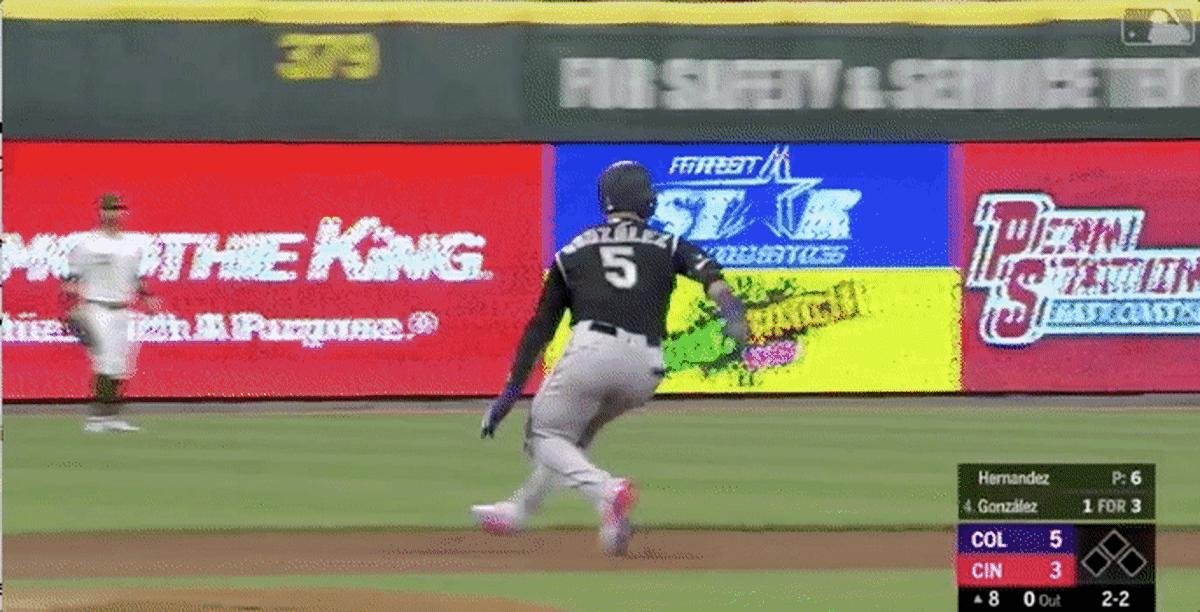
This isn’t necessarily a baseball error, but it’s a very human one. Of all the ways that a person can mess up—literally, any person, doing almost anything, at almost any time—falling down is both one of the simplest and the most reliably hilarious. The act, on its own, is an entire genre of dumb YouTube videos. So here’s González, trying to perform the basic task of getting from Point A to Point B, and instead just slipping into the essence of those dumb videos.
Scooter Gennett hits the panic button

A generous interpretation of this move is that Gennett was trying to get the ball to third and didn’t quite make it. But a more faithful interpretation seems that Gennett was just trying to get the ball anywhere, to get rid of it and push the responsibility and the spotlight off to someone else, even if that “someone else” turned out to be an unmanned spot of dirt midway between second and third. The error here is multilayered—a desperate act committed poorly—and it’s beautiful.
Most errors make for lonely baggage—one player singled out by the box score, forced to shoulder the consequences of his mistake alone—but this one felt like a shared act, with each player involved somehow messing up worse than the one before him had, and the weirdness of that collective performance made it the best thing that I saw this week.
ROUNDTABLE: WHAT'S ONE CHANGE YOU WOULD MAKE TO THE ALL-STAR GAME?
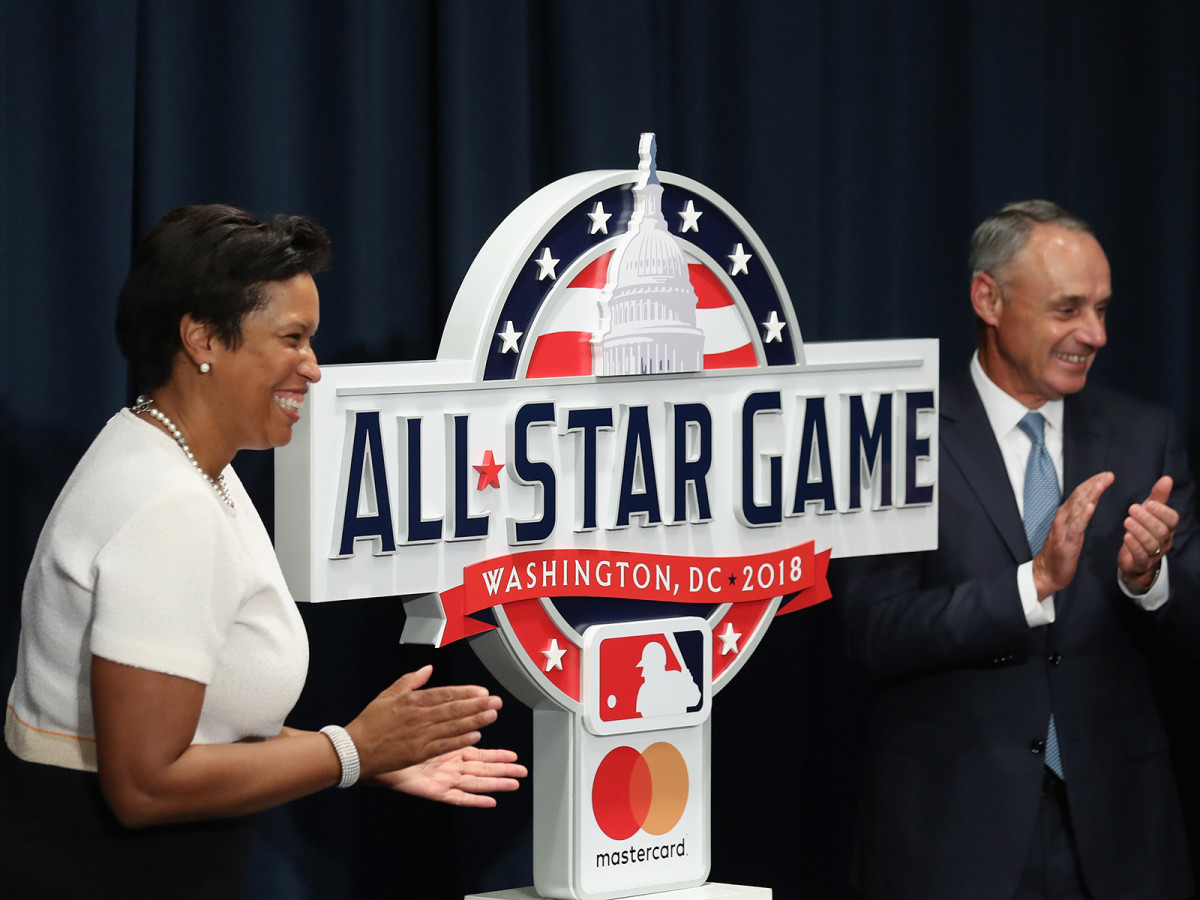
Emma Baccellieri: The move to separate the All-Star Game from World Series home field advantage was great—this whole thing is supposed to be fun, and taking away the pressure of that real-world consequence was definitely a step in the right direction. Since there's no longer an explicit need for the game to be American League versus National League, then, why not make the whole thing even more fun? Try a team selection process something like the one introduced in the NBA's All-Star Game last year. Fans would vote, and the two players with the highest vote totals would be made team captains who would then draft their own rosters.
But MLB could go one step further than the NBA did, and make that draft a televised event. It'd be unconventional, sure, but for a league that could stand to be a little less buttoned-up and a little more personality-driven, it seems like a fair way to shake things up at an event that's supposed to be nothing more than good fun in the first place.
Gabriel Baumgaertner: Free entry and exit: This is an extension of the “wild card” argument so frequently invoked by people who want to see stars play late in the game. Have a fixed substitution rule like in, say, soccer, where you can re-enter three players over the last three innings. If the game goes to extra innings, it should become unlimited to help avoid potential injuries or wear-and-tear. Baseball is so stodgy that they would never entertain this, but we must keep the stars on the field in the late innings. This is one way to do it.
Jack Dickey: I’m afraid too much of what I dislike about the All-Star Game is by this point essentially built in. I would like the best starting pitchers to throw two or three innings each, like they used to, but that won’t happen. I would like the rosters not to be so bloated, and for the best players to actually play six or seven or even nine innings, but that won’t happen. I would like middle relievers to be functionally banned from rosters unless they are having Josh Hader- or Adam Ottavino-level magical seasons, but that won’t happen. Alas.
Astros Win After Manager A.J. Hinch Gets Balk Call Overturned
I liked MLB’s reported proposal for a top-three runoff at each position for fan voting, though, and while that won’t happen this year, it’s not as much of a lost cause as everything else. Just like Brandon Nimmo’s write-in all-star candidacy, it has my full support.
Connor Grossman: MLB should now look at the All-Star Game as an incubator for radical ideas. My favorite is the ability to reinsert players after they've already been removed from the game. If managers feel peer pressure to use every player on the roster, forcing the game's best players out after a handful of innings, then those same stars should be able to come back into the game, especially if it's close. Sure, Mike Trout left the game after four innings so Joe Random could get his 15 minutes of fame. Now let Trout back into the game with the bases loaded in the eighth inning of a one-run game against Josh Hader. In a game that means nothing, who cares if the drama is artificial?
Jon Tayler: Follow the NBA’s lead: I want to see teams split not by AL/NL designations, but chosen sandlot-style. Appoint two players, either one from each league or the top two overall vote-getters, as team captains, then have them draft their rosters from the full pool of All-Star selections.
Blue Jays Top Prospect Vladimir Guerrero Jr. Out At Least Four Weeks With Knee Injury
This change would be a nice shakeup to a format that’s grown stale: With year-round interleague, AL against NL isn’t a unique matchup any more. Much more interesting would be seeing superstars team up, or former teammates re-unite. Plus, it significantly ups the likelihood of petty resentments and hurt feelings over who does and doesn’t get picked. And while the NBA screwed up by not televising its draft, MLB should show us the drama live on television, giving fans a chance to follow along and argue over who should’ve been picked when and by whom.
It’s unlikely the players agree to this, but if they’re not willing to put friendships on the line, then MLB should take a cue from the Futures Game and turn the Midsummer Classic into a USA vs. World showdown. It’d be all the fun and passion of the World Baseball Classic distilled into a nine-inning, superstar-filled rumble. Make either of those happen, and the All-Star Game is suddenly a special marquee event once more.
RANK 'EM: 10 UNLIKELY ALL-STAR CANDIDATES THIS SEASON
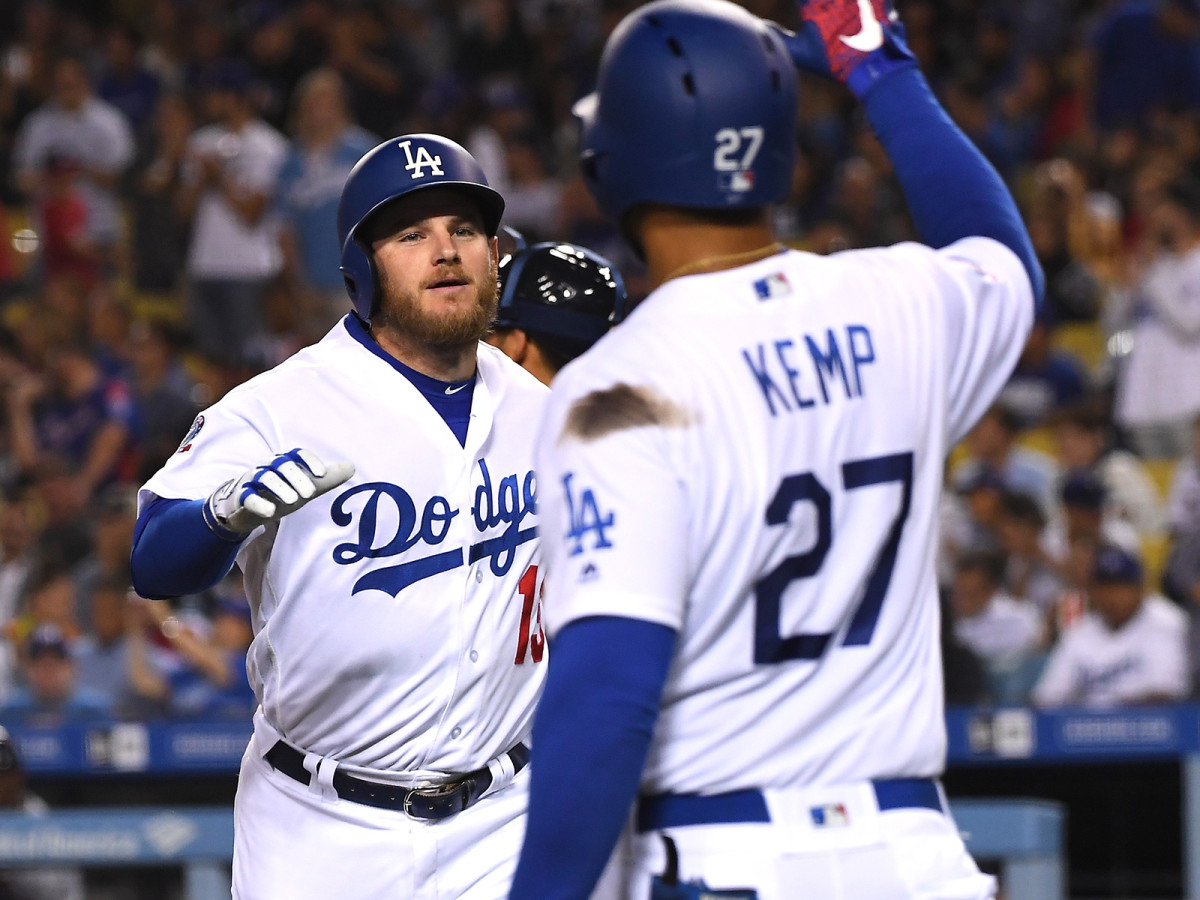
By Gabriel Baumgaertner
C Wilson Ramos -- Tampa Bay Rays: .287/.332/.441, 7 HR, 30 RBI
Ramos gets the edge over Dodgers backstop Yasmani Grandal because of how well he has bounced back from an injury-plagued 2017 to become one of the most reliable offensive catchers in baseball. Since they seem intent on rebuilding, the Rays could likely fetch a decent package for a team looking to boost their catching situation close to the trading deadline.
1B Brandon Belt -- San Francisco Giants: .307/.403/.537, 11 HR, 31 RBI
Though he’s currently on the DL, Belt looks like the player the Giants have waited him to be for years. He’s finally got a big power stroke to accompany his batting eye and excellent defense. Should he return from the DL as strong as he was prior to appearing there, Belt should be an All-Star this season.
2B Scooter Gennett -- Cincinnati Reds: .340/.376/.556, 12 HR, 47 RBI
Read Jack Dickey’s item from two weeks ago for the full portrait of Gennett’s brilliant season, but this guy won’t stop hitting. He’s leading the league in hitting and has the same number of home runs as Cody Bellinger, Paul Goldschmidt and Gary Sanchez. He could learn to take a walk or two, but Gennett has (somehow) emerged as to one of the most valuable offensive contributors in baseball.
Central Divisions Lead the Way on This Week's Fantasy Baseball Waiver Wire
SS Andrelton Simmons -- Los Angeles Angels .330/.399/.460, 4 HR, 34 RBI
Simmons was already one of the game’s very best defenders, but he’s matured into a disciplined hitter who seldom strikes out (10 in 244 plate appearances) and has remained comfortably over .300 all season.
3B Max Muncy -- Los Angeles Dodgers .272/.395/.616. 12 HR, 28 RBI
Matt Kemp is the Dodgers’ first-half MVP, but Muncy might be their savior. A player who entered the season with 245 career MLB plate appearances, Muncy is now slugging over 1.000 after taking five walks over the last two games and has jolted his slugging percentage by over 100 points since the beginning of the month. He’s done all of this while filling in for an injured Justin Turner and a struggling Cody Bellinger.
OF Matt Kemp -- Los Angeles Dodgers: .338/.368/.564 10 HR, 41 RBI
If Gennett weren’t having an MVP-caliber season, Kemp might be the captain of this team. He wasn’t even supposed to suit up for the Dodgers this season and he’s one of the primary reasons that the team’s season didn’t end after they fell 10 games under .500 in May. He’s showcasing power to all fields and that defense that everybody dreaded hasn’t been too bad.
Shohei Ohtani's Trip to the Disabled List Is the Cruelest News of the Year
OF Nick Markakis -- Atlanta Braves: .327/.388/.492, 8 HR, 43 RBI
Markakis joins Kemp for the unlikeliest guys to revitalize their careers in 2018. Markakis leads all of baseball with 85 hits and 19 doubles even though he started his 13th big-league season this year—having never made an All-Star team. While Freddie Freeman and Ozzie Albies have gotten most of the credit for the ascendance of the Baby Braves, Markakis has provided them with excellent lineup stability.
OF Mitch Haniger: .267/.351/.496, 13 HR, 47 RBI
Haniger is a three-true-outcome guy (add 29 walks and 62 Ks to his 13 homers), but he’s emerged as a formidable middle-of-the-order presence for a team that lost one of its most dangerous players in Robinson Canó. Haniger’s always struggled with injuries, so here’s to hoping he can stay in the Mariners’ lineup all year and maybe help them break the longest playoff drought in all of professional sports.
SP Miles Mikolas -- St. Louis Cardinals: 7–1, 2.27 ERA, 0.958 WHIP
Mikolas barely inches out Mike Foltynewicz of the Braves, and that’s because Mikolas spent last season in Japan and was hardly expected to be a significant contributor to a team with playoff aspirations. The Cardinals can’t hit much outside of Tommy Pham and Jose Martinez, so it helps to have a starter who has allowed more than two earned runs just once over his last ten starts. Better yet, Mikolas leads all of the big leagues with a 1.0 BB/9.
RP Josh Hader -- Milwaukee Brewers: 35.1 IP, 1.02 ERA, 0.65 WHIP, .088 BAA
Sometimes, you’ve just gotta let somebody else do the talking since they did the research.
On a related note -- the last time Hader allowed a hit on an 0-2, 1-2, or 2-2 count was September 30 of last season. Hitters are 0-for-80 with 64 Strikeouts on those counts against him this season (including today). #remarkable #brewers
— Inside Edge (@IE_MLB) June 9, 2018
THE MARINERS HAVE PERFORMED REMARKABLY IN ONE-RUN GAMES
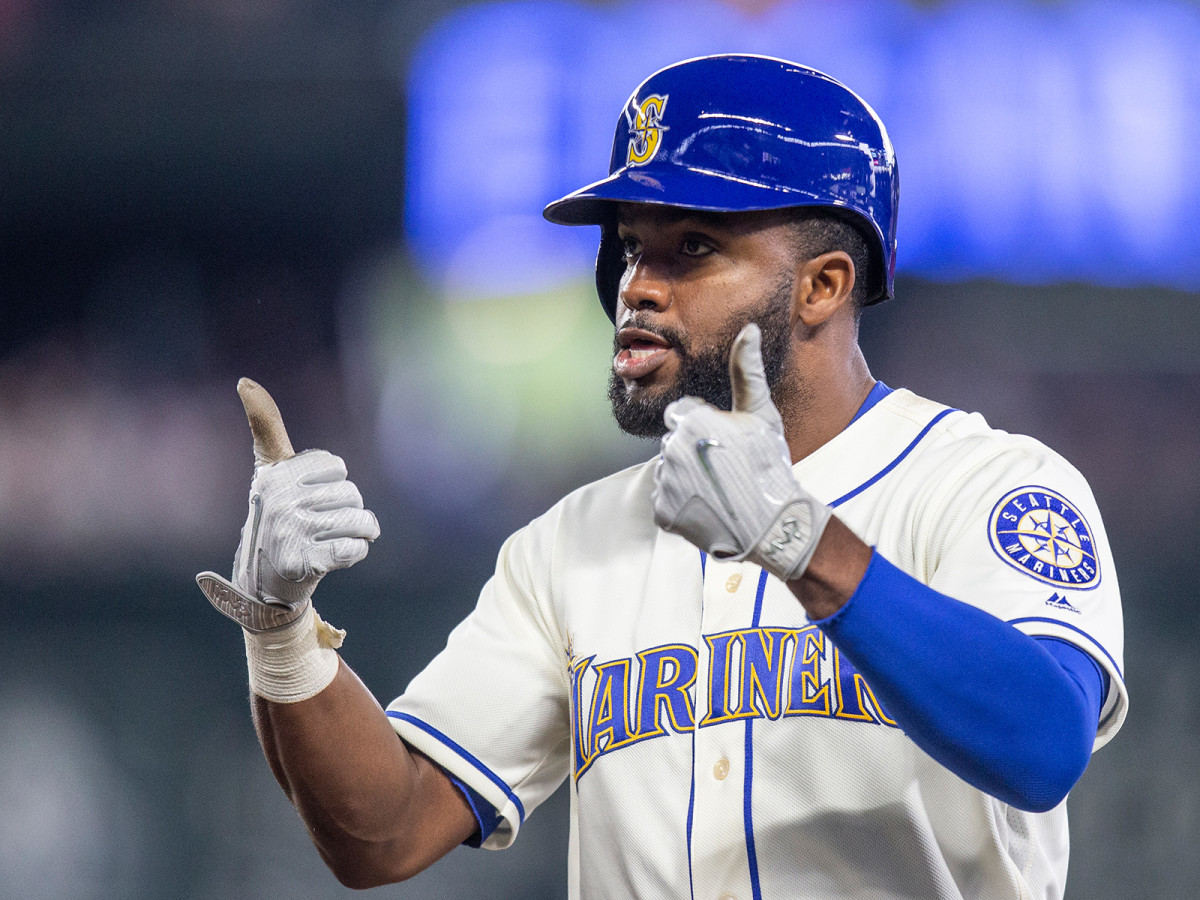
By Jon Tayler
If you’re a Mariners fan in 2018, most of your innings have been spent with heart rate quickened and knuckles whitened, knowing one pitch could be the difference between victory and defeat. On Sunday, Seattle rallied over and held off Tampa Bay, 5–4, for another one-run win in a season that’s been full of them—30, to be exact, which leads all of baseball. And in the toughest of atmospheres, Seattle has thrived, winning 21 one-run games this season—also the most in the majors.
Sunday’s win over the Rays was of a piece with the Mariners’ season as a whole. After falling behind 3–1, they jumped ahead on a pair of two-run homers from Mike Zunino and Kyle Seager, then gave up a run in the eighth to make things hairy. Things got even scarier in the ninth. With two outs and Johnny Field on first, Carlos Gomez blooped a ball to right off of Edwin Diaz that dropped in front of a sliding Mitch Haniger. As Haniger struggled to collect the ball, Field took a chance and tried to score all the way from first. It was a bad gamble: Haniger fired a one-hop strike home, nailing Field by 10 feet to save the day.
A late escape from doom has become the Mariners’ signature. Two days before Haniger’s throw gave them a win, Zunino nabbed Tampa’s Joey Wendle trying to steal second with two outs in the ninth to preserve a 4–3 victory. The day before that, ex-Ray Alex Colome gave up a two-out–bases-loaded double in the ninth to former teammate Field to turn a 5–1 game into a 5–4 affair before closing it out. And just two weeks ago, Seattle started the month with Diaz giving up a run in the ninth against (who else) the Rays on a Matt Duffy single in a 3–2 game, knotting it until Haniger walked it off in the 13th.
You may have noticed the trend of the Mariners winning despite those close calls. Since the start of May, they’re a ridiculous 15–5 in one-run games, including five walkoffs. It helps when you have Diaz in the ninth. The Puerto Rican righty has been unhittable this season, with 54 strikeouts in 33 innings and an MLB-high 22 saves. He seems to be at his best when the pressure is highest: Of his 17 save opportunities with a one-run lead, he’s converted all but two. And his teammates pick him up during his rare stumbles, as Seattle has won all three of his blown saves this year.
Despite those heroics, the Mariners’ 21–9 record in one-run games isn’t the best in baseball. By winning percentage, their .700 is topped by the Yankees (11–3, .786), Brewers (15–6, .784) and Braves (10–4, .714). But no team has faced that situation more often this year, and Seattle’s success in those close games is a big part of why the team is atop the AL West with a 41–24 mark despite a run differential of just +20 and a Pythagorean record—calculated on runs scored and allowed—of 35–30.
No. 1 Pick Casey Mize Allows Six Runs in First Start Since Draft
So while the Mariners’ one-run success may not be sustainable, those Rangers—who held off a Seattle team that had a better run differential (+61 to +8) but finished nine games back in the standings—show it can be ridden to the postseason. Fans in the Pacific Northwest will just have to hope that their team’s predilection for cardiac event-inducing finishes doesn’t kill them all before they get there.
COREY KLUBER ISN'T WALKING ANYONE—BUT HE'S HARDLY SNIFFING THE MLB RECORD
By Jack Dickey
Bill Fischer, the six-foot-tall righty who pitched for five teams over nine seasons from 1956 to ’64, never led the league in anything. He never came close, really. But during the last two months of his 1962 season for Hank Bauer’s ninth-place Kansas City Athletics, Fischer somehow managed to go 84 1/3 consecutive innings, which spanned 11 full starts and a relief appearance, without walking a single batter. (He walked Bubba Morton in the fifth inning of his final start of the season.) The funny thing about Fischer’s streak, which remains unbeaten today, is that he didn’t even pitch well—he had a 4.00 ERA and a 2-8 record in those games.
These days, especially in the years since Carlos Silva’s retirement, baseball’s most walk-averse pitchers tend to be some of its best. Clayton Kershaw, Zack Greinke, Noah Syndergaard, Chris Sale—they’re all among the 15 pitchers stingiest with walks, on a per-inning basis, over the last five seasons. This season, the toughest starter to walk against has also been perhaps the toughest starter to face, save Justin Verlander: Corey Kluber. Over two starts and 15 innings this week, Kluber allowed just 12 hits and three runs, striking out 15 and walking none. The Indians won both games and Kluber, in the second outing, extended his walk-less streak to 43 1/3 innings. He hasn’t walked a man since the Brewers’ Domingo Santana on May 8. And yet he’s only a little bit more than halfway to Fischer’s total. The strike zone is smaller these days, but Kluber could be up to the challenge. And even if he isn’t, there’s a lot going right for him this season beyond his stellar command: He holds the league lead in innings pitched and ranks second to Verlander in hitters’ OBP against. Their AL Cy Young duel projects to be one of this summer’s great treats.
TWEETS OF THE WEEK
The @Mets Seth Lugo held the Yankees scoreless in his first start against them, striking out eight and allowing no walks. The last starter to allow 0 runs and 0 walks with 8+ Ks in his first career start against the Yankees?
— OptaSTATS (@OptaSTATS) June 11, 2018
Greg Maddux in 1997. #LGM
Amazing stat of the day
— SIS (@SportsInfo_SIS) June 8, 2018
José Ramírez
18 HR vs Fastballs
17 missed swings vs fastballs pic.twitter.com/L4h0QHM1vM
Giancarlo Stanton made his MLB debut 8 years ago today. The only players with as many HR as Stanton by the 8th anniversary of their debuts: Ralph Kiner, Eddie Mathews, Ernie Banks, Albert Pujols, Adam Dunn, Ryan Howard.#Yankees at #Mets
— Elias Sports Bureau (@EliasSports) June 8, 2018
7 pm ET on @MLBNetwork
(@SNYtv locally)
5+ Walks in a game
— Mike Garrigan (@MikeGarrigan23) June 7, 2018
Mark Buerhle: 6 times in 493 career starts
Bob Gibson: 7 times in 482 career starts
Max Scherzer: 8 times in 309 career starts
Tyler Chatwood: 8 times in 12 starts this season @ckamka @jaysonst @Cubs @MattSpiegel670
#Orioles swept in a 4-game series in Toronto. Stop us if you’ve heard this before.
— Jayson Stark (@jaysonst) June 11, 2018
It’s already the SIXTH time they’ve been swept in a series on the road this season.
Which is more than the 5 road series in which they’ve won a game.
They’re 9-27 on the road. Yikes!
Just realized that Daniel Mengden looks like @FlemmingDave trying to avoid the paparazzi. pic.twitter.com/wHTWJCPQrH
— Grant Brisbee (@GrantBrisbee) June 8, 2018
FROM THE VAULT: RECALLING THE ASCENSION OF TIM LINCECUM
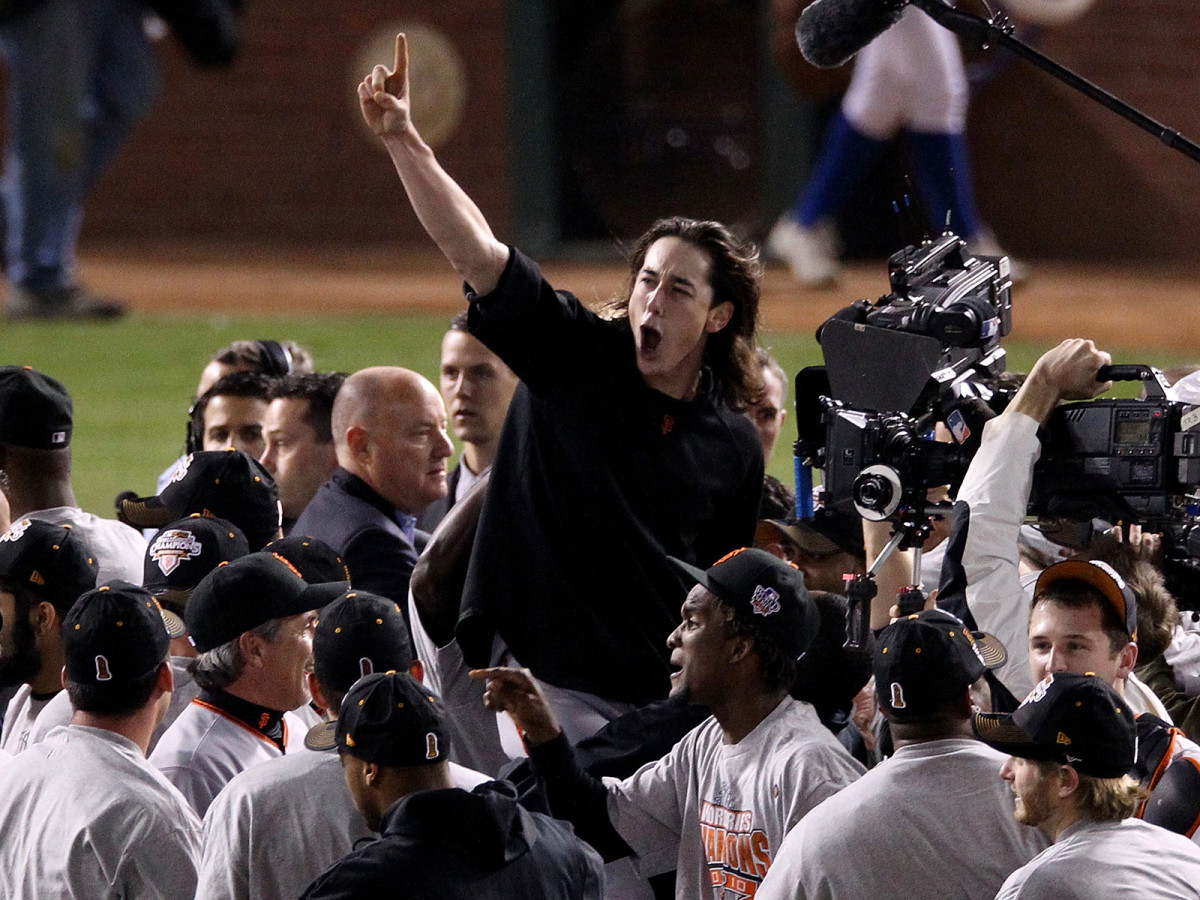
By Connor Grossman
As quickly as Tim Lincecum ushered the Giants into a championship era, his own star status evaporated precipitously as San Francisco won it all in '10, '12 and '14. He went from tossing eight masterful innings in the clinching game of the 2010 World Series to making the best of a bullpen demotion in the 2012 postseason to pitching only once in the 2014 playoffs—1 2/3 innings of mop-up duty. Lincecum turns 34 on Friday and may have seen his major league journey come to an end last week when the Rangers released the 33-year-old. He posted a 5.68 ERA in a 30-day rehab stint with Triple-A Roundrock.
But let's roll it back to better days for The Freak—winner of the 2008 and 2009 National League Cy Young. In this July 2008 cover story, Tom Verducci peels back the curtain on Lincecum's success. He chronicles the righthander's unorthodox delivery; how Lincecum maximizes every fiber of his 5'7'', 170-pound frame to unleash a ridiculous 7 1/2-foot stride on each pitch. Enjoy the excerpt below or find the entire story here.
Where Lincecum truly separates himself from most pitchers is the length of his stride. It is ridiculously long as it relates to his height. And just as his left foot, the landing foot, appears to be nearing the ground at the end of his stride, he lifts it as if stepping over a banana peel—extending his stride even more. The normal stride length for a pitcher is 77% to 87% of his height. Lincecum's stride is 129%, or roughly 7 1/2 feet.
"That just came naturally," Tim says. "My dad always told me to sit down on my back leg as long as I could and push off as much as I could. I'm trying to get as much out of my body as possible. I've got to use my ankles, my legs, my hips, my back.... That's why I'm so contorted and it looks like I'm giving it full effort when it's not exactly full effort."
